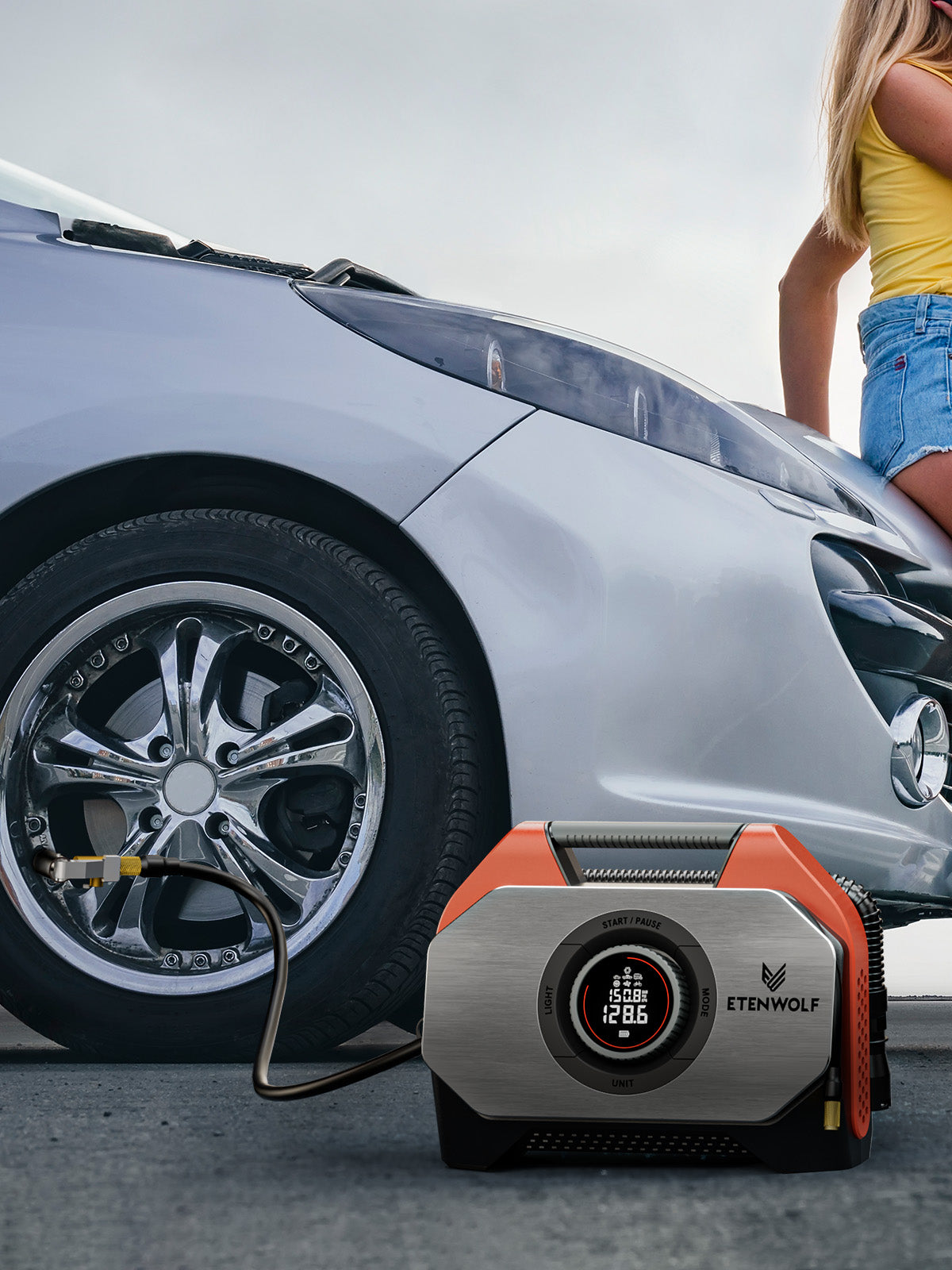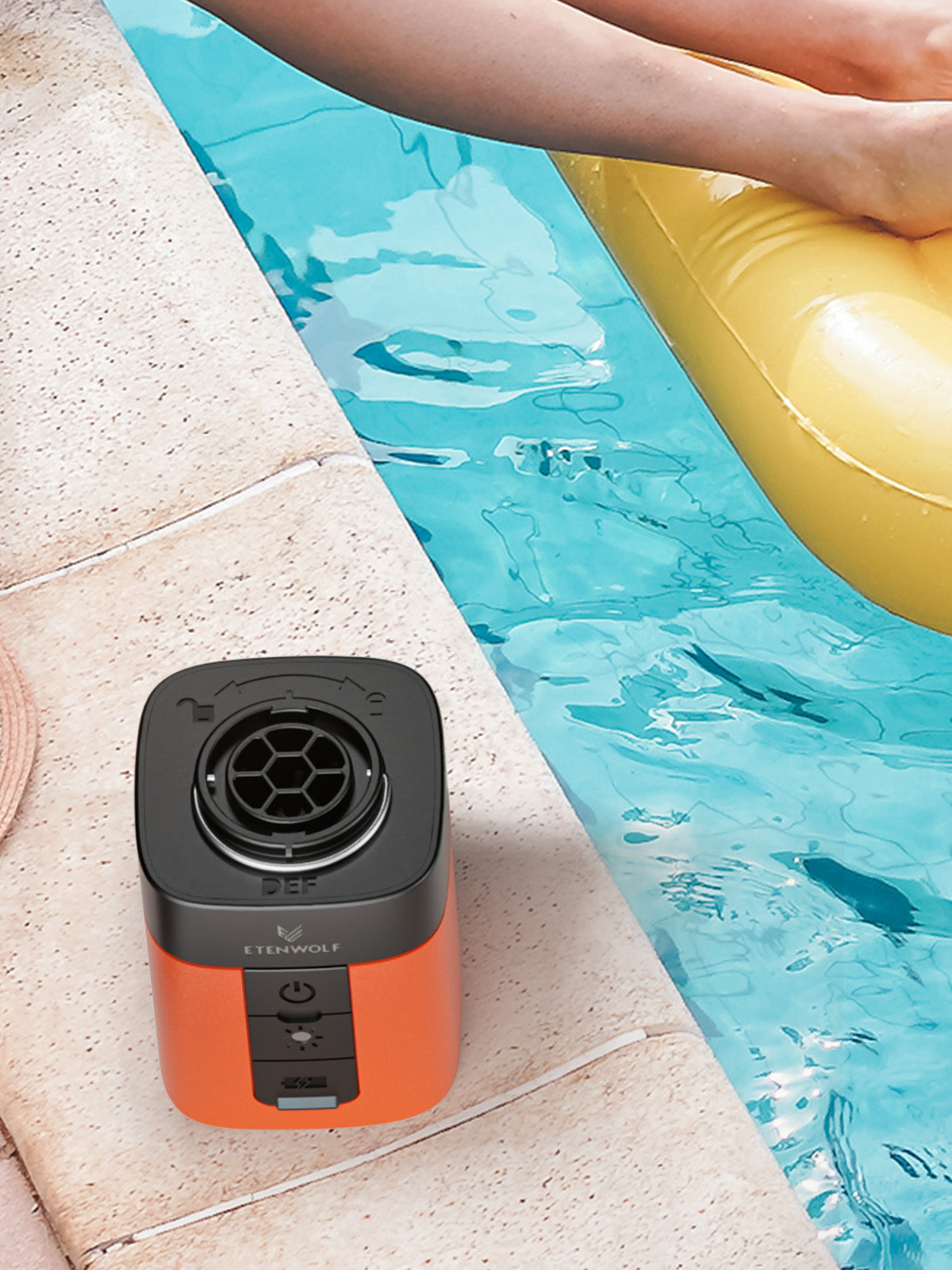You drive along the highway while listening to your preferred song until the amber warning light activates to show the low fuel indicator.
Your mind immediately wonders about the distance your vehicle can travel before it completely runs out of fuel.
Your mind starts to panic because you fear running out of fuel during an isolated location.
The fuel warning light does not represent an immediate threat to your engine but you should not dismiss its appearance. The article explains how much driving distance remains safe after the fuel warning light activates and explains the dangers of operating a vehicle with insufficient fuel and reveals the hidden relationship between incorrect tire pressure and reduced fuel efficiency.
The article will show you methods to maintain your vehicle's operational efficiency and safety which benefits your finances and tire health.
What Does the Low Fuel Warning Light Actually Mean?
The low fuel warning light functions as a safety mechanism which activates when there’s about 10–15% of your fuel tank remaining. The American Automobile Association (AAA) reports that vehicles usually have between 1.5 and 2.5 gallons of fuel when the low fuel warning light illuminates. (Source)
Your vehicle will continue operating without any immediate shutdown when the warning light activates. The distance your remaining fuel will travel depends on three main elements, which include your vehicle's fuel efficiency rating and your driving environment (city vs. highway), and your driving habits (speeding, heavy acceleration, idling).
The appearance of the small light does not mean your car will die right away. But it’s a signal that the countdown has begun.
How Many Miles Can You Drive After the Fuel Light Comes On?
The distance people can drive after their fuel warning light activates. There is no precise answer because different vehicles have different capabilities. (Source)
YourMechanic and Car and Driver analyzed data which shows most cars can travel between 30 and 50 miles after the low fuel warning light turns on.
The following examples demonstrate the distance cars can travel after their fuel warning light activates:
· Toyota Camry: ~45 miles
· Honda Accord: ~40 miles
· Ford F-150: ~35 miles
WhoCanFixMyCar reports that different vehicles maintain different amounts of reserve fuel which range from 1.5 gallons in small sedans to 3 gallons in large SUVs. (Source)
The additional distance you can drive after the fuel warning light activates does not guarantee. The reserve fuel buffer will drain at a faster rate when you drive through stop-and-go traffic or climb steep hills while using your air conditioning.
Why Running on Empty Is a Bad Habit
Even if you know you can probably squeeze Another 40 miles out of the tank isn't worth the risk. Driving with extremely low fuel has several hidden dangers:
· Fuel pump damage: The pump needs gasoline to function as a lubricant and cooling agent. It will experience overheating and draw air when the fuel level is near empty, shortening its operational life.
· Sediment and impurities: Your fuel tank accumulates debris and residue that settles at the bottom over time. The system becomes more likely to draw in fuel particles when fuel levels remain low, resulting in clogged fuel filters and injectors.
· Reduced safety margin: You never know when you might encounter unexpected traffic, a curve, or a remote stretch of road without a gas station. Running in "E" leaves no room for error.
Consumer Reports warns that frequent low fuel levels will damage your fuel pump, which can cost $500 to $1000 for replacement. (Source)
The Hidden Link: How Tire Pressure Affects Fuel Economy
Although the fuel warning light will remind you that the fuel level is low and you need to refuel, there is a hidden factor that you don't usually notice, but which really consumes your fuel – underinflated tires.
The U.S. Department of Energy states that tire pressure reductions of 1 PSI will decrease your fuel efficiency by 0.2%. Your fuel efficiency will decrease by 2–3% when all four tires operate at 10 PSI below their recommended pressure. (Source)
The National Highway Traffic Safety Administration (NHTSA) states that correct tire inflation leads to better gas mileage of 11 cents per gallon, and the risk of tire blowout is reduced by improving controllability and reducing heat buildup. (Source)
Your engine needs to generate additional power when you drive with underinflated tires because they create increased drag that opposes your vehicle's motion. The additional engine work results in increased fuel consumption and accelerated tire deterioration and elevated danger of tire failure when driving at high speeds.
Real-World Example: The Ripple Effect of Low Tire Pressure
A midsize SUV owner who drives 25 MPG per gallon will experience a 1 MPG decrease in fuel efficiency when their tires operate at 5 PSI below recommended pressure. The annual gas consumption increase from underinflated tires amounts to 16 extra gallons which costs between $60 to $70.
The 16 gallons of fuel combustion produce 320 pounds of CO₂ which enter the atmosphere.
The small difference in tire pressure makes a significant impact on your financial costs and vehicle security and environmental sustainability.
Easy Ways to Stay Efficient and Safe
You can achieve car performance maintenance through basic methods that require no expensive tools or technical expertise. Here’s what you can do:
· Avoid forcing the fuel indicator to turn on.
Fill up your gas tank when it reaches ¼ of its capacity because this practice safeguards your fuel system while reducing driving stress during extended trips.
· Perform tire pressure checks during the monthly.
The natural decrease in tire pressure amounts to 1 PSI per month but cold weather conditions cause additional pressure loss. Use a dependable gauge or inflator for your tire pressure checks.

· Find your vehicle's recommended tire pressure level.
The driver's door interior sticker and owner's manual contain the recommended tire pressure values. The maximum pressure rating appears on the sidewall but it does not represent the recommended operating pressure.
· A dependable tire inflator should be your investment choice.
A portable inflator provides you with instant access to inflate tires during any road trip or when your tires experience low pressure.
When Technology Meets Practicality: ETENWOLF Vortex S7

The ETENWOLF Vortex S7 provides users with an alternative to unreliable gas station air pumps and low-quality inflators that fail during operations.
The ETENWOLF Vortex S7 serves as an advanced heavy-duty tire inflator which suits both sedans and RVs and trucks for drivers who need dependable performance.
· The dual 260W motors of this inflator enable users to inflate 30-inch SUV tires in under 1 minute.
· The 38,400 mAh battery enables users to inflate 33 F-150 tires (245/70 R17) from 30 to 35 PSI before needing a recharge. It also features a 100% duty cycle, a mature cooling system, and continuous inflation to prevent overheating and shutdown.
· The device operates as a complete system which supports inflation of cars and trucks and bicycles and inflatable items.
· The device provides exact pressure readings to ±1 PSI while automatically shutting off.
· The ETENWOLF Advantage includes built-in cooling and 1000-lumen LED lighting and USB-C fast charging capabilities.
The tool provides you with complete tire maintenance which leads to better fuel efficiency and extended tire life and stress-free driving during your travels.

Conclusion: Keep an Eye on Both Lights
Your vehicle has enough fuel for several dozen miles when the warning light activates but you should avoid taking any risks. The warning light serves as a dual alert which requires you to perform both fuel refilling and tire pressure inspection.
The two warning systems which include a visible signal and an invisible signal deliver identical messages about performing maintenance tasks to prevent small problems from turning into major financial costs.
A short period of preparation before your journey will provide you with better results regardless of your destination.
When the light turns on you should avoid simply hoping for the best results. The combination of smart habits with the ETENWOLF Vortex S7 will give you road confidence after you refill your tank and check your tire pressure.
FAQs
Q1. What does the low fuel warning light mean?
This indicates that your fuel tank is running low, typically with 10-15% fuel remaining. You should plan to refuel as soon as possible.
Q2. What distance can you travel after the fuel warning light activates?
The distance you can drive after the fuel light turns on depends on your vehicle model and driving conditions and load but most cars can travel between 30 to 50 miles.
Q3. Can driving with low fuel damage my car?
Driving with low fuel levels can harm your vehicle because it causes the fuel pump to overheat while drawing contaminants into the fuel system which results in expensive repairs.
Q4. What impact does low tire pressure have on vehicle fuel efficiency?
The engine needs to consume additional fuel because underinflated tires create increased rolling resistance. Proper tire inflation leads to better fuel efficiency and enhanced vehicle safety.
Q5. How frequently should I perform tire pressure checks?
Perform tire pressure checks at least once monthly and always before starting a long journey. The ETENWOLF Vortex S7 portable inflator helps you achieve proper tire pressure with ease.







Leave a comment
All comments are moderated before being published.
This site is protected by hCaptcha and the hCaptcha Privacy Policy and Terms of Service apply.